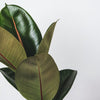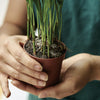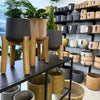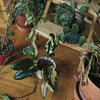Philodendrons, darlings not only of collectors

Philodendrons (sometimes you will also come across the Czech name philodendron) is a very numerous group of plants, which includes the most diverse shrub-like and climbing species. Their somewhat jarring name is derived from the Greek words phileo = love and dendron = tree, and they got it because the climbing species literally hug their host trees with their aerial roots. They come from Central and South America, where they grow as epiphytes and semi-epiphytes on trees, even in the lower levels of the rainforest, on rocks and in swamps.
It belongs to the family of arum plants (aroids), so in addition to the fact that after a few years of good care it can delight you with a club-shaped flower (similar to a scapula), it is poisonous! These plants contain calcium oxalate crystals in their tissues, which after ingestion will cause irritation of the mucous membranes of the oral cavity and digestive tract. But if you place it in a safe place where children and pets can't reach it, it won't be a problem.
Philodendrons are among the simpler plants to care for. If you follow a few principles that we will describe below, they will literally grow before your eyes. Most species grow really fast, so they can boost the self-confidence of even novice growers.
Which one to choose first?
We have already mentioned that there is really an abundance of philodendron species. Therefore, they are often especially loved by collectors of indoor plants, who enrich their collection with all sorts of rare species. You can even get just philodendrons for your home, but they can all look very different and diverse. Due to their diversity, we will therefore only focus on a selection of some varieties, and take a look at all of them that are available in our e-shophere .

Photo: Climbing Philodendron scandens Brasil is remarkable for its color
Climbing philodendrons
There are certainly more climbing philodendrons than shrub types and, at least in our conditions, they are more popular as houseplants. As the name suggests, they like to climb on things. When you give them a coconut stick as a support
or even better a peat stick , their aerial roots will penetrate inside and the plant will do great. Our peat stick can be customized so that the stick will literally grow with your plant.
You don't necessarily have to support it, just let it hang from a shelf or in a hanging flowerpot. However, its leaves will not get the opportunity to grow to large sizes, and the total increments will probably be a little smaller than compared to growth on a support.
Probably the best-known and most widespread species is Philodendron scandens , which attracts attention mainly with its heart-shaped leaves (sometimes it is also nicknamed the little heart). Young leaves have a slightly bronze tinge. Philodendron scandens micans is a very similar species, but has velvety soft leaves of a darker shade than the one mentioned above. Philodendron scandens Lemon Lime is a beautiful neon green that will definitely stand out in any interior. Another beauty is Philodendron scandens Brasil , which resembles the Brazilian flag with its shiny green leaves and neon yellow stripe in the middle.
Philouses, as I affectionately call them, are one of my favorite maids. Philodendron scandens Brasil leads perhaps above all. Every single leaf is original, new leaves grow quickly and always turn out so beautifully! I could watch it instead of TV...
- Baby girl

Photo: Philodendron Birkin will not grow very tall, but it will create a compact spectacle.
Bushy varieties
A beautiful representative belonging to this group is the very popular Philodendron birkin . Its beautiful glossy leaves with white-green lines catch all eyes. The undemanding species Shangri La grows to enormous sizes and is particularly impressive with its long petioles with shaggy leaves. The variety Philodendron Narrow has interesting and very long serrated leaves .

Photo: Philodendron Burle Marx Variegata is among the collectibles of rare plants. Variegated variety with white-yellow spots. Its equally stunning brother is Philodendron Burle Marx .
Rare varieties
Philodendron melanochrysum is similar to P. scandens with its velvety leaves , but has dark green to green-black leaves with light green veins. Philodendron White Knight is a beautiful collector's item. It has green leaves with white variegation and an interestingly colored stem that alternates purple with white. Philodendron Gloriosum has beautiful huge heart-shaped velvety leaves. It is a slow-growing variety, which, however, makes up for the time-consuming nature of its growth with its perfect leaves, which are worth waiting for. Philodendron Painted Lady is also a beautiful variety . It impresses with its variegated leaves, really like a painted lady according to its English name. The youngest leaves have a tinge of yellow, over time they acquire a darker green color. Their petioles are pinkish-brown, and overall the plant plays with many colors, a joy to look at!Philodendron verrucosum has velvety smooth dark green leaves with pale green to yellowish veins. The back side of the leaves is red to purple and the petioles of the older leaves have hairs. It is a really interesting majestic plant, it must not be missing in any collection of philodendron lovers.

Photo: Most plants of this species will thank you for a moist support, for which you can use a peat stick or coconut stick. The aerial roots thus evenly absorb nutrients from the aerial roots as well, and the plant has larger leaves over time.
How to take care of them?
Philodendrons in general are relatively undemanding plants that will thrive in most conditions. This makes them very suitable even for beginners! Most species grow very quickly, especially in spring and summer, but we have verified from our own experience that they can grow all year round. They can double the number of leaves in a year! Be sure to choose a suitable location when you bring home a young plant. After several years of indoor cultivation, they can become somewhat unkempt and spindly due to intensive growth. So there is nothing easier than rejuvenating the plant. We will describe how to do it below.
Light conditions
They do best with plenty of diffused light. Just be careful of direct afternoon sun, it could burn their leaves. A few hours of direct morning light will definitely not hurt. They also tolerate shady places, just be aware that the growth will not be as vigorous and the colored species will not be so brightly colored.

Photo: Philodendron with large leaves once in a while, in addition to dewing, you can lightly clean it with a damp cloth.
Topping and environment
The temperature should not drop below 12 °C, in the summer easily 20 - 25 °C, but you must provide them with high humidity. Since they come from rainforests, they will not thrive in dry air. You can mist them with a sprayer several times a week, they will certainly do well even near the air humidifier. Or place the plant on a saucer with pebbles, which you cover with water - but be careful that the water does not touch its roots, as they could start to rot.
Water with lukewarm water until at least the top layer of the substrate has dried. It will certainly be more frequent from spring to summer, as many species grow luxuriantly, reduce watering in autumn and winter. You can add fertilizer to the watering every about 14 days. The plant will definitely appreciate it if you regularly remove dust from its leaves. Wipe the leaves with lukewarm water and a cloth, or you can skip one watering and take the whole plant in the shower. Moist leaf wipes are also a good solution, which clean the leaf from dust, partially nourish it thanks to the contained fertilizer, and increase their shine even more.
Substrate
The best substrate for philodendrons is peaty soil, which is permeable, but at the same time retains part of the water well enough. Thanks to our experience, we have mixed a special substrate for you for plants from the Araceae family, which also includes philodendrons, with which we only have the best experience. The substrate is prepared from a mixture of white and black peat, sand, perlite, pine bark, coconut husks (coco-chips) and is enriched with fertilizer with basic nutrients and trace elements.
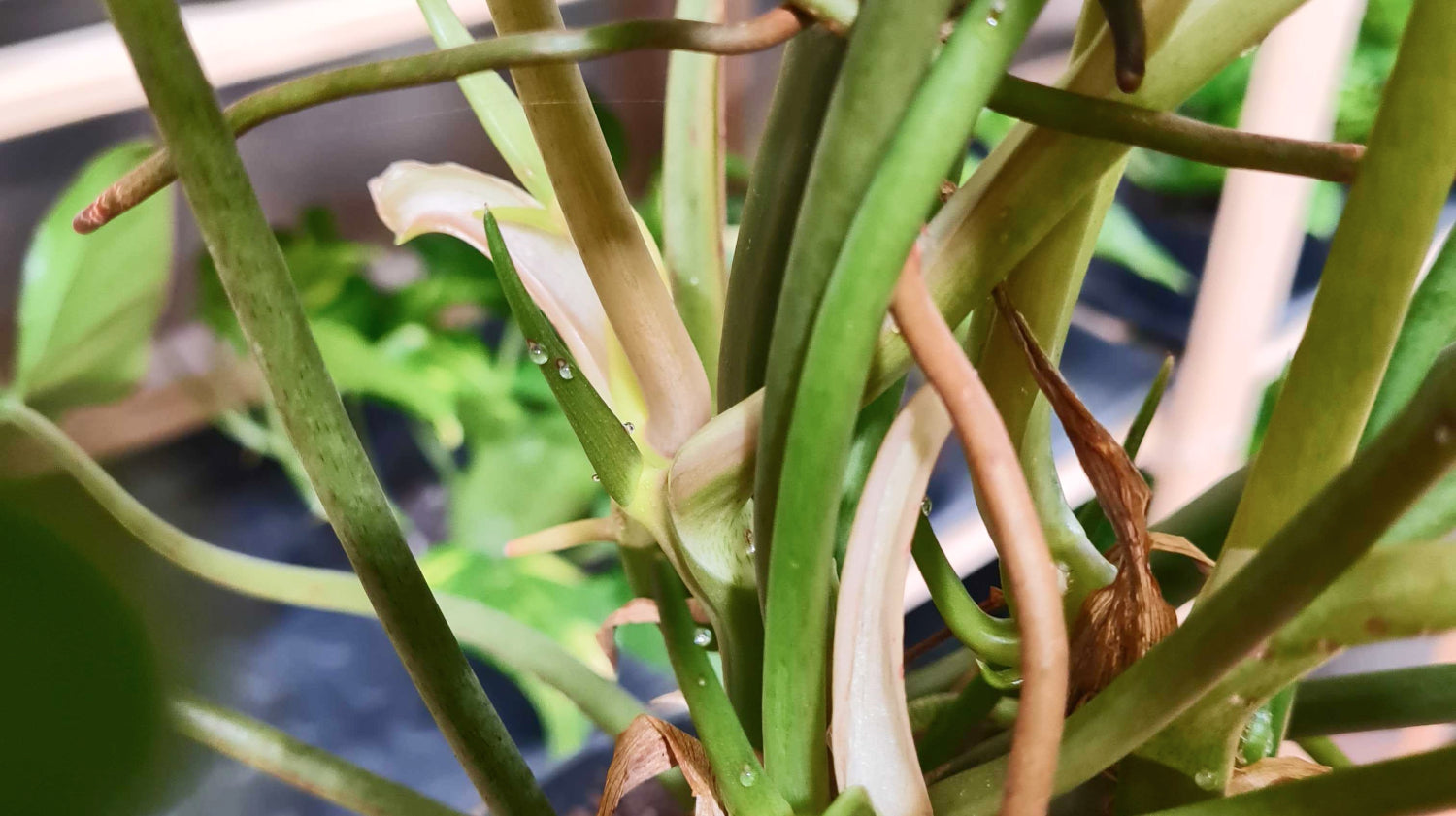
Photo: All philodendrons have aerial roots, thanks to which they reproduce very easily. Just cut a cutting with an aerial root and leave it in water or peat for a few days
Transplantation and propagation
These plants do not benefit from frequent transplanting, on the contrary, you can leave it until the time when their roots grow out of the drainage holes. But if the plant is perennial and its center of gravity is disproportionately high (or low when growing without support), go for it. For very mature individuals, it should be enough to replace at least the top layer of soil if you are worried about handling a large plant. But if you want to start a complete transplant, you will learn how to do it in our article .
You can remove unsightly or damaged sheets at any time as needed. When you want to adjust the shape of a plant or multiply it, there is nothing easier than cutting cuttings. We have written detailed instructions on how to proceed in this article.
Most philodendron species root very well in water, you can also add lignohumate to speed up root formation. You can also put fresh cuttings in another moist medium, such as peat moss . Another option is to use a powdered root growth stimulator, which you carefully sprinkle on the cutting in places where it has aerial roots, and we can then place it directly in the soil.
Problems and pests - what to do when things go wrong
Philodendrons do not often suffer from pests either. However, you may encounter that once in a while your plant curls its leaves into a roll. You don't have to be alarmed, it does this when there is a lack of water. If it looks healthy otherwise, it's just droopy and glassy, water it and it'll be fit again.
If the plant turns yellow from below and its leaves fall off, it is overwatered. Stop watering for a while and let the substrate dry out, or even better, transplant into a new substrate and don't water as often, especially in winter or in a dark location.
Browning and drying of the tips of the leaves means low air humidity. Get an air humidifier, or place the flower pot on a saucer with pebbles and pour water into it (be careful not to let the roots stand in water) or use a sprayer to grow the plant more often.
Brown or black spots on the leaves or their edges are burns. They can appear from direct sunlight or in winter from frost if, for example, some leaves touched the window.
It can also happen that there is little or almost no new growth and the plant is poorly colored. This would mean that she has little light and would need to move to a better lit location.
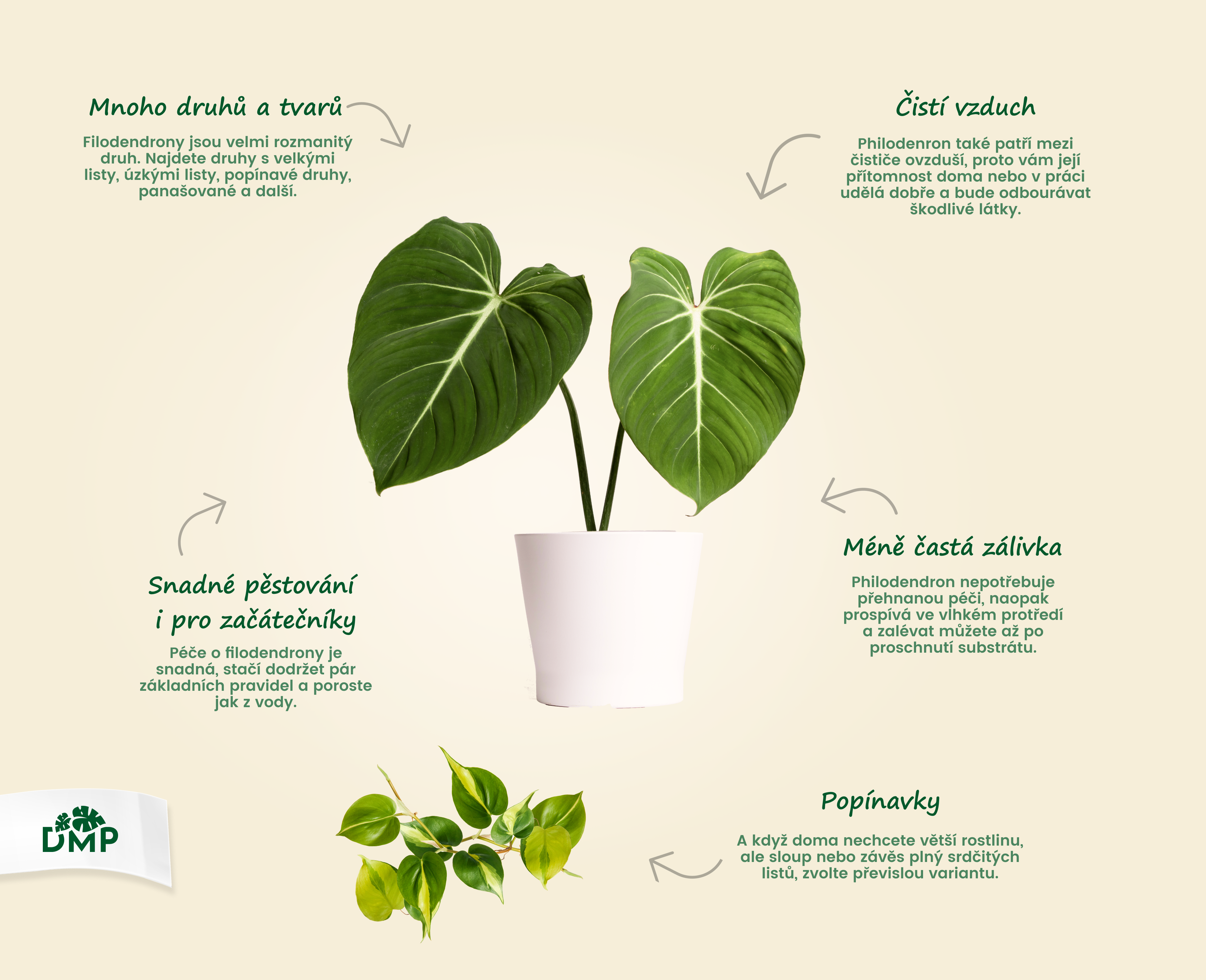
For every home!
Perhaps everyone has to choose from such a large number of species thatwe have on offer . And believe me, you won't make a mistake. Philodendrons are great!
Author: Ing. Elizabeth Lacinová
-
Posted in
Péče o pokojovky
